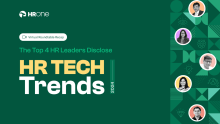HRIS trends for 2017

HRIS in action: IBM Europe utilised an HRIS in order to connect their 340.,000 employees through revolutionary and engaging new company oriented social media.
Workforce Inc., when 10 new employees were added suddenly to the payroll, a capable HR system provided necessary tool, such as electronic paystubs, and timesheet software in order to smoothly integrate the new employees to the existing system.
Toshiba American medical system Inc., by manipulating a streamlined and functional HR software system, TAMS has created a library of documents and forms on its HR portal, including the benefits guide which earned a 2004 Apex award for publication service.
When the concept of a HR system was originally pioneered by General Electrics in 1950’s, it was a little more than a rudimentary means by which a company might convert manual record keeping system into computerised applications. Information technology applications have largely taken over Human Resources management functions. Human Resources software, core HR IT systems, cloud-based and outsourced, these systems forms a pool of oppurtunities that can sometimes be confusing and overwhelming for business owners. HRIS technology trends are changing and challenging vendors to come up with next-generation solutions for employers. Valued at over $15 billion globally, the human resources technology market is one of the fastest growing segments in business IT — and it shows no signs of slowing down. With an HRIS, companies can align HR strategy with business objectives to get the most out of their workforces and adapt quickly to market changes.
HRIS programs upgrade and integrate core systems and cloud based performance. HRIS relieves IT personnel to pursue overall corporate and operational needs, encourages employee and management interface, and facilitates administration and communication over multi site operations. Developing companies are looking for more than record keeping in HRIS technology trends. They value products that integrate Enterpriser Resource Planning (ERP) with HRMS. They appreciate the traditional human resource software hire-to-retire processes like recruiting, archiving, performance management, and compensation, but they want to align the data with the ability to track and manage workers external to the organisation. So, they are looking for more in terms of things like talent management analytics. In fact, they want to learn more about analytics and just how analytics can improve their tasks and accountability across the board.
There are a number of solutions offered by HRIS. Some of these include solutions in training, payroll, HR, compliance, succession planning, attendance tracking, risk management, recruiting, etc. The majority of quality HRIS systems include flexible designs that feature databases that are integrated with a wide range of features available. Ideally, they will also include the ability to create reports and analyze information quickly and accurately, in order to make the workforce easier to manage. It allows employees to exchange information with greater ease and without the need for paper through the provision of a single location for announcements, external web links, and company policies. This location is designed to be centralized and accessed easily from anywhere within the company, which also serves to reduce redundancy within the organization.
HRIS, or human resource information system is an intersection of human resources and information technology through HR software. According to the research firm IDC, spending on Human Resources cloud systems that record employee information over the internet hit $4.8 billion in 2012. The interest in core HRIS software remains strong as more companies move away from in-house on-premises solutions. According to a Workforce survey, nearly 600 HR practitioners very likely want to replace, upgrade, reimagine or reimplement their core HR systems to make them more user friendly for the workforce and easier to maintain from an IT standpoint.
Reasons for the reinvention of HRIS:
- Core HR systems have just become a lot better. Employers are finding that their corporate internal proprietary systems can include or re-engineer most of the bells and whistles of the HRIS market.
- Some HRIS software products are aging, engineered well on the IT side but shallow on the side of evolving Human Capital Management (HCM), Talent Management (TMS), and Enterprise Resource Planning (ERP).
- Some software packages come with more features than they realistically need.
Some key features of the trends this year:
Software as a Service Explosion: Opting for software-as-a-service instead of an on-premise HR system is quickly becoming the norm. it is becoming ever easier to access HR information from anywhere. SaaS use is expected to double throughout the next two years, which may have an impact on the way that workplaces and employees function together in many ways.
Establishment of Comprehensive Performance Management: With the advent of HRIS features like 360 degree performance management, the way that performance is tracked, rated, and communicated has begun to change slowly. Many workplaces have been slow to adopt new performance management programs.
Widespread Use of Mobile HR Apps: Some HR vendors have begun to offer mobile app options, hence, employees can expect to see more push notifications and other mobile-centric features. Smartphone options may begin to expand in a way that benefits both companies and employees as the apps become more widely offered and used.
Increased focus on Employees: In recent years, companies have begun to pay more attention to employee contentment and wellness. Some employers have decided that it makes sense to make the company as attractive to employees as possible in order to garner the interest of top talent. Not only will attracting top talent help protect against staffing issues, it will also serve as a competitive advantage.
Optimized Analytics and Data Use: While analytics may be used to spot trends in HR data and prevent staffing and scheduling issues, they have much greater potential for the future. As integration improves and systems become capable of combining and accessing all workplace information from a single database, the data may be used to optimize many processes and truly identify the reasons behind more workplace problems and advantages.
The Cloud remains in the forecast: Nearly every major HR software vendor is offering or making plans to offer its solution in the cloud. Cloud computing delivers increased flexibility, faster updates and innovation, and cost decreases. Core HR solutions on the cloud include ADP, Oracle, SAP, Workday, Ultimate Software and Infor, among others.
It is important to choose the right HRIS as it has become a given part of the operation. A company that takes the time to invest in a HRIS that fits their goals, objectives, mission, and values, is a company that is investing in its future and in its success. It will be necessary to customize any HRIS to the unique needs of a company so the system will remain flexible and relevant throughout the life of the company or enterprise. Human Resources management cannot think of doing business without it. HR technology is constantly evolving; staying at the forefront of the newest trends can give companies a competitive advantage. At this point, HRIS solutions and automated HR systems of all types are not new things in most workplaces. However, features and functions of the systems are improving and becoming ever more useful and efficient.











